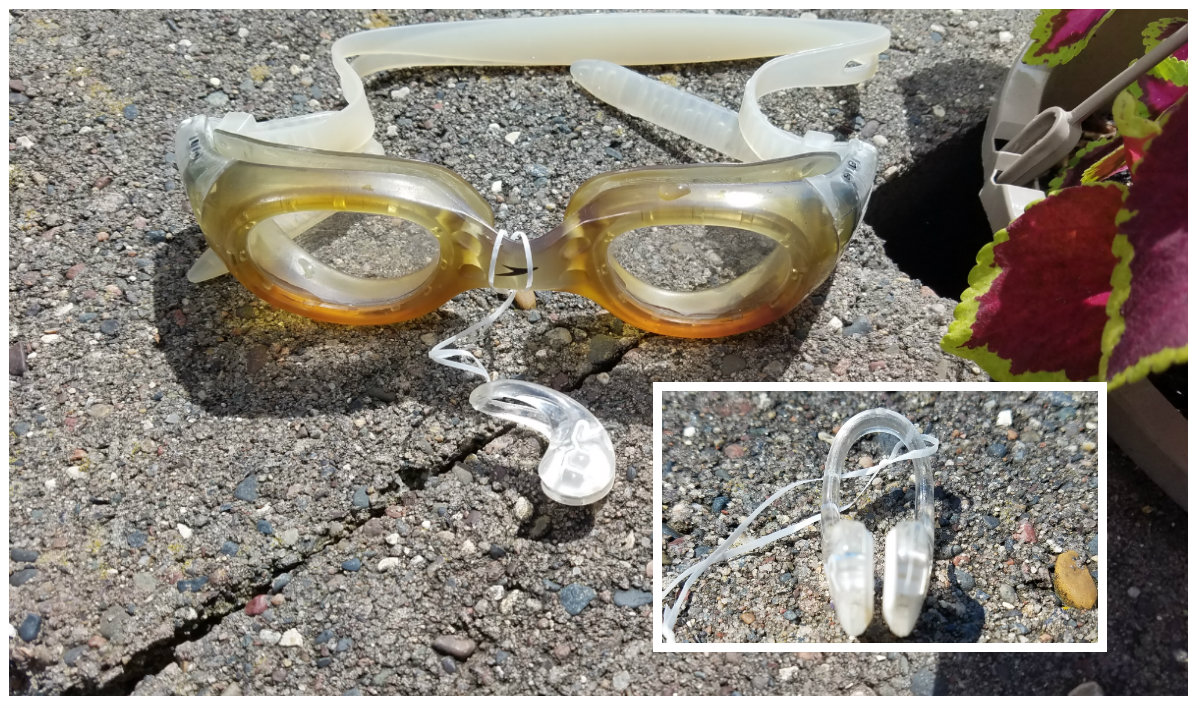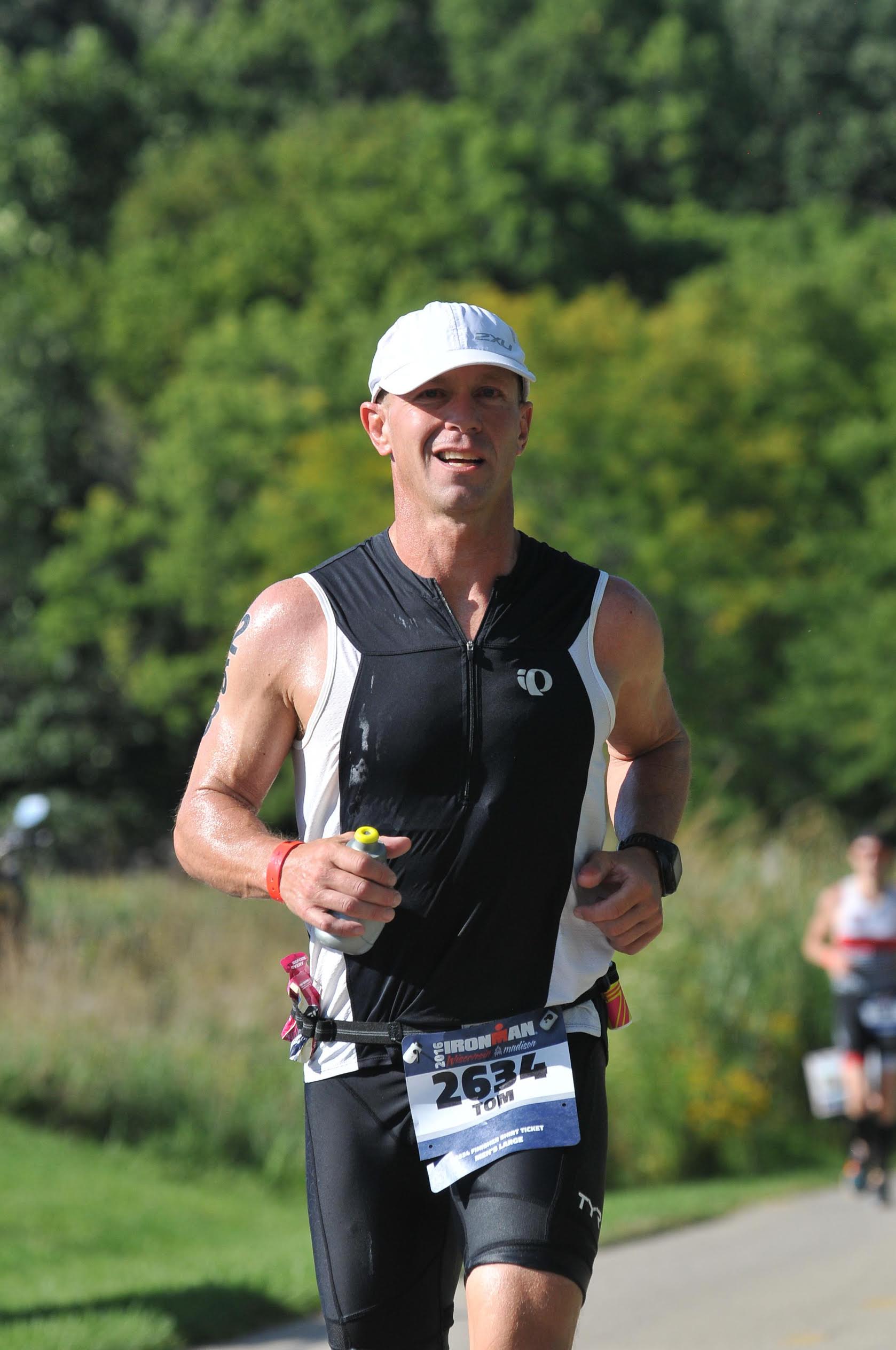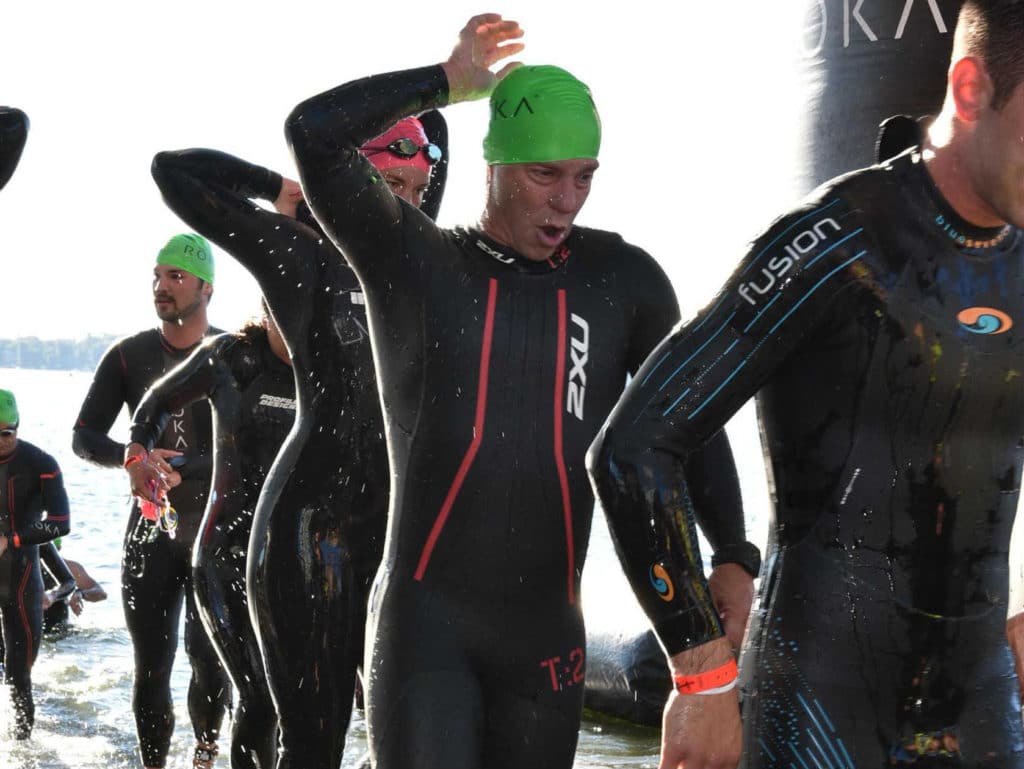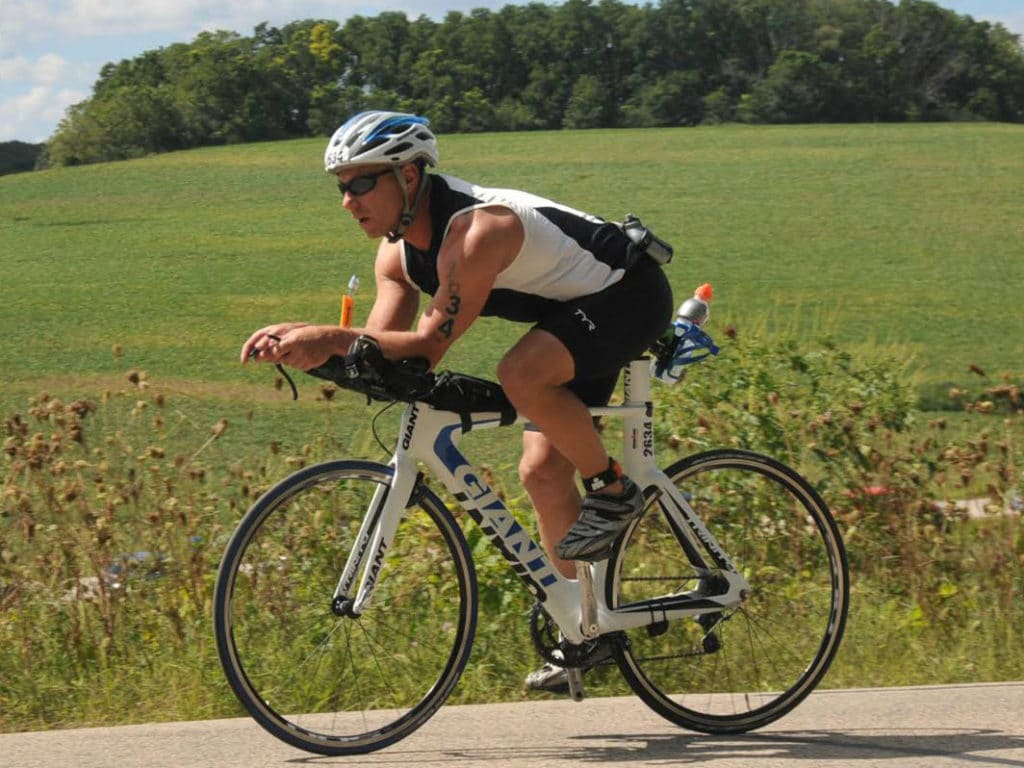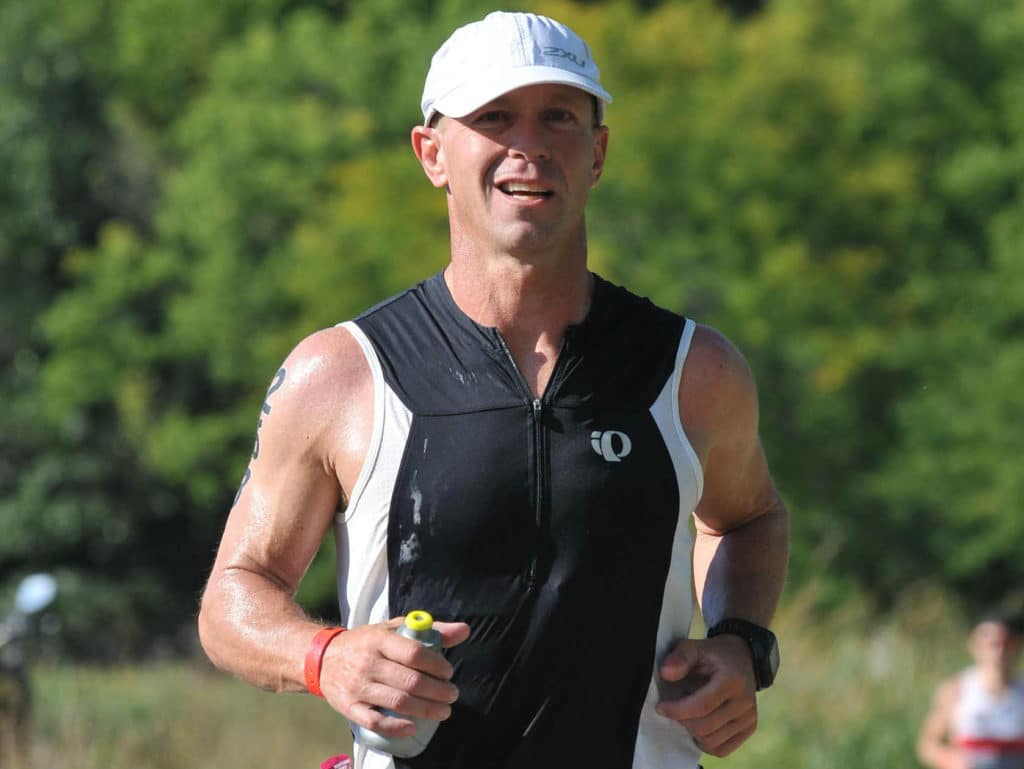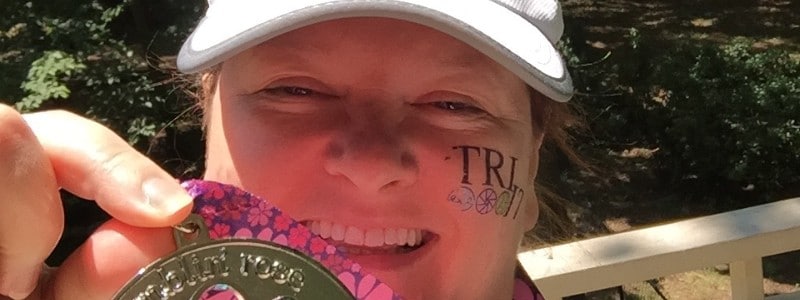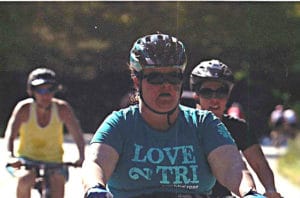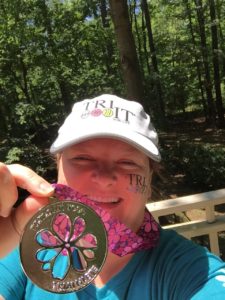Product Review: Nose Clip for Triathlon Swim Training
Does water in your nose during swimming lead to sneezing or a running nose after your swim? How about congestion? If you share any of these symptoms, you will also find my experience with a nose clip useful for your triathlon swim training.
I Love Swimming Except For Water In My Nose
I am comfortable when swimming, whether in a pool or the open water.
My breathing during both pool and open water swimming is comfortable and relaxed. I exhale through my mouth and nose while my face is in the water. This keeps me from taking in much water during the swim. But, there is always some water that gets into my mouth and nose.
The pool water that gets into my nose will invariably result in a runny nose and sometimes sneezing over the next few hours.
When I swim in lake water, even the slightest amount of water in my nose will leave me with a plugged nose, making sleeping the next night difficult. I blame it on an allergy to the algae in the lake water.
While a nasal decongestant will help reduce the congestion, I avoid using one until it is necessary.
In the past, I had tried a nose clip that I dug out of my wife’s gym bag. However, it was more hassle than help since it slipped off my nose after a short time in the water.
Rethinking the Nose Clip for Triathlon Swim Training
Recently, I came across an article about Olympic swimmer and gold medalist Missy Franklin. The article showed her wearing a nose clip.
This got me thinking.
Since I live near a lake, open water swim training is very accessible. I decided that I wanted to solve the problem.
I took to the internet to review various nose clips. For every positive review, there was an equally negative one. In most cases, the reviewers with negative comments wrote of the clip falling off their nose. Several even lost their clip during its first use. No brand seemed to be immune from this.
In the end, I went to local sporting goods stores, finally finding a clip at a local REI. I purchased the last unit of the only model they had in stock, the TYR Ergo Swim Clip.
You can also purchase the TYR Ergo Nose Clip at SwimOutlet.com.
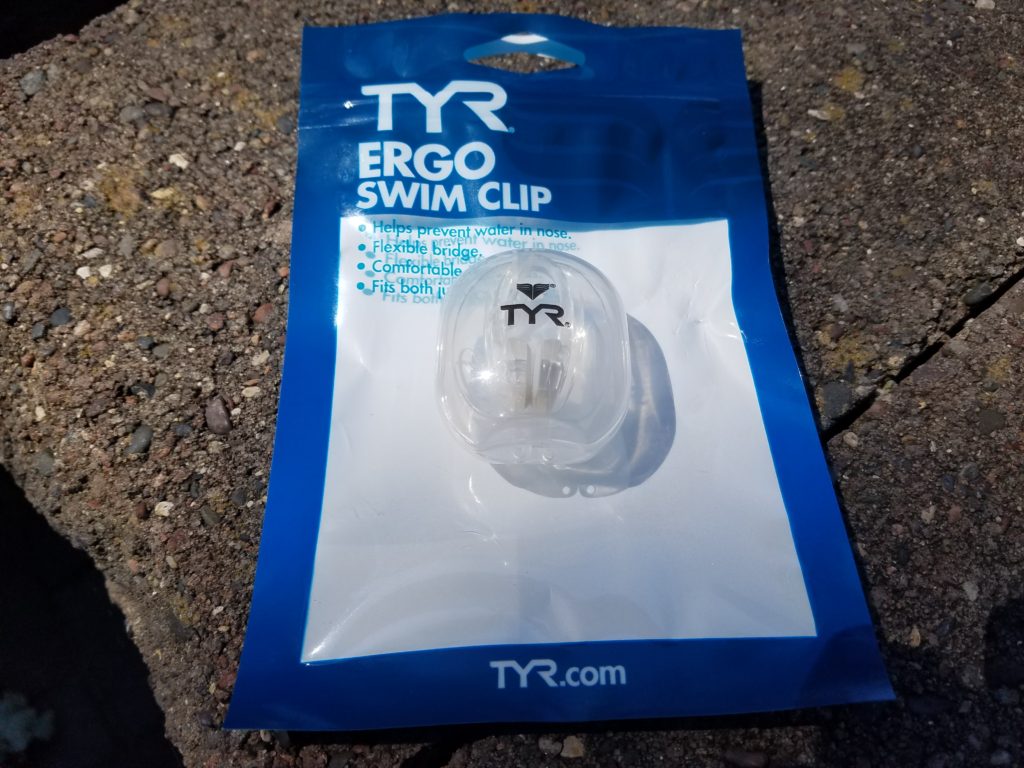
My experience with the TYR Ergo Swim Clip has been positive, especially with the clip attached to my swim goggles.
Protecting My Investment
The nose clip is inexpensive (around $5) so it would not be terrible if I lost it in the lake.
However, losing it would mean that I would be back to square one, getting water in my nose. Also, I preferred to not be running around shopping for another if I were to lose this one. Remember, my experience with nose clips was that they fell off.
I decided to find a way to keep from losing the clip in the lake. The first attempt was to use some good quality dental floss to secure the clip around my neck (like a necklace). This was similar to the design of the clip that I had borrowed from my wife, except that hers used a rubber strap.
I secured the floss to the clip using a loose knot around the bridge of the clip. The knot was smaller than the ends of the clip so that it would not come off. For reference, see the inset in the picture in this article for which the caption begins with “Here is what worked for me“.
First Open Water Swim
In my first open water swim of one mile, the clip came loose two times, the first time after swimming more than a half mile. Since the process of coming off my nose was relatively slow, I could stop and reattach the clip before it came completely off.
Pool Swim
The second time, I used the clip in the LA Fitness swimming pool. Again, I found that the floss holding the clip around my neck would catch on my face, occasionally tugging on the clip. I was certain that this is the reason the clip started to come off my nose.
While in the pool, I also found that the nose clip did not sink to the bottom of the pool when dropped in the water. Instead, it floated somewhat below the surface of the water. Still, I was not giving up on securing it.
Second Open Water Swim
The next time, during an open water swim in a nearby lake, I attached the floss holding the clip to my goggles (see picture below). The floss was still the original length; throughout the swim, I could feel the floss dancing around my face, occasionally catching momentarily on my skin and tugging on the clip.
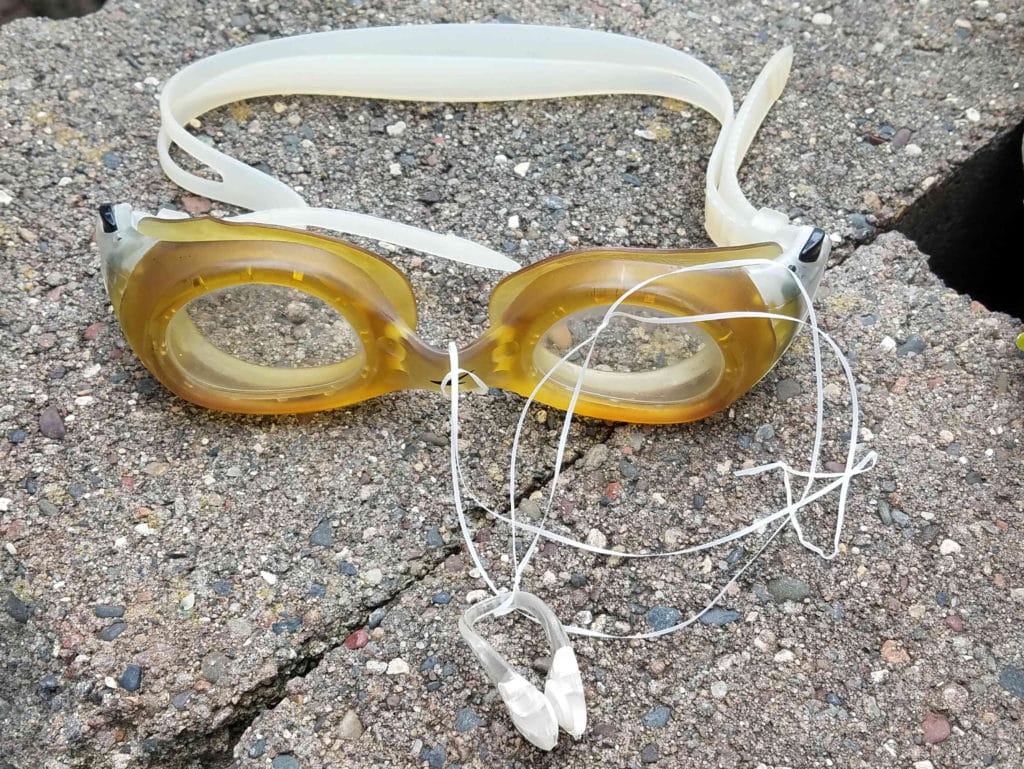
Swim goggles with TYR Ergo Nose Clip connected by dental floss. In this case, the floss is longer than needed which caused it to catch on my face during the swim.
However, over the course of a mile, the nose plug came loose, but not completely off, only once. Progress!
Third Time’s a Charm
Before the next lake swim, I reduced the length of the floss holding the clip to the bridge of my goggles so it was not brushing against or catching on my face.
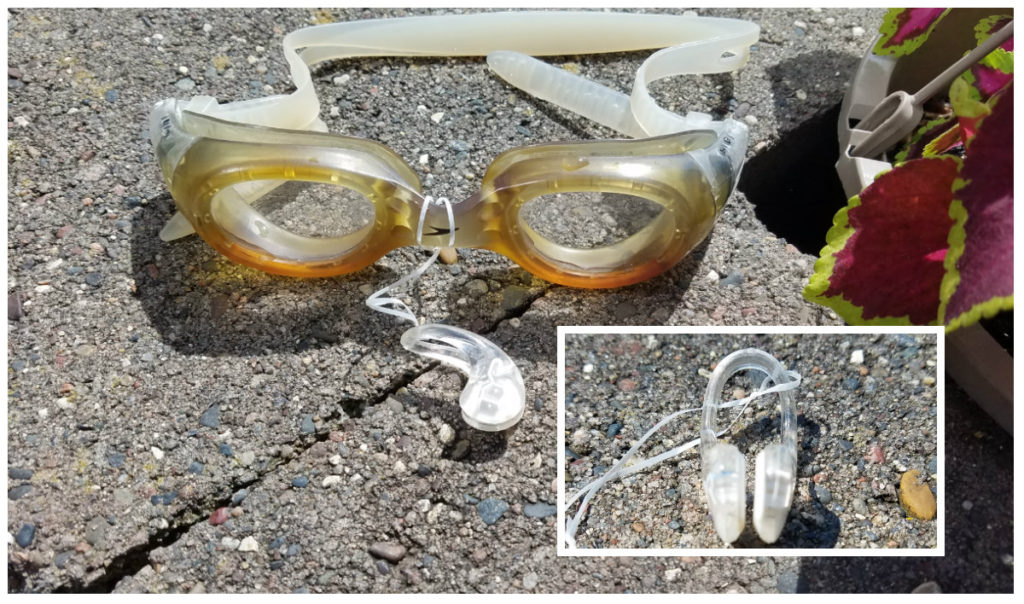
Here is what has worked for me for triathlon swim training. Swim goggles with Tyr Ergo Nose Clip connected by floss. The floss is secured to the nose clip by a knot that prevents the floss from passing over either of the two larger ends of the clip.
The result was exactly as I hoped. The clip stayed on my nose throughout a one mile lake swim. And, more importantly, there was no runny nose or congestion.
Not Used in Racing—Yet
I have not worn the nose clip in a triathlon. However, I know I would have benefited from it in races involving open water swims, especially those in which the algae-filled water led to post-race nasal congestion.
An Inexpensive Aid for Triathlon Swim Training
If you have problems with water getting in your nose during swimming, the swim clip may be the solution. You can avoid losing it—or worrying about losing it—in the pool, lake, river, or ocean by clipping it to your goggles using a short piece of floss or string.

